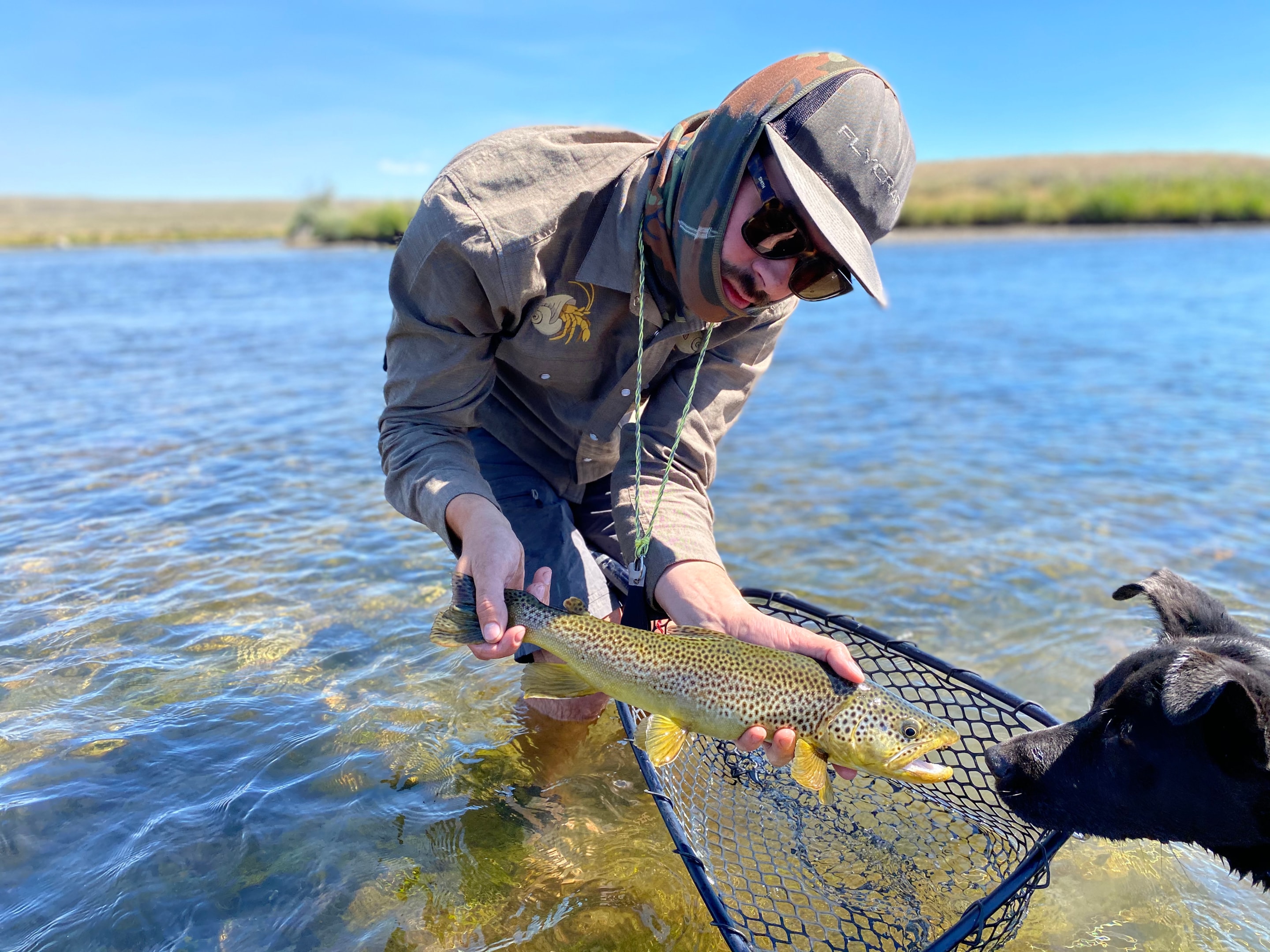Inflatable Boats vs. Drift Boats: Why Inflatable Boats Are Ideal for Fly Fishing
Fly fishing is an activity that combines patience and skill while providing a deep connection with nature. Most anglers begin by fishing from shore, honing their technique through walk-and-wade fishing, which allows for a slow, methodical approach to reading water and understanding fish behavior. However, as you gain experience and consume more fly fishing content, you'll start to notice a recurring theme—boats, whether drift boats or inflatable rafts, play a significant role in expanding an angler’s opportunities. Many of the most successful anglers and guides rely on boats to access remote stretches of river, increase efficiency, and enhance their presentation. This naturally leads to a common question: Should I invest in a boat, and if so, which one?
There are numerous reasons why anglers consider a drift boat or raft, but the main advantages of fishing from a boat versus walk-and-wade include:
-
The ability to access more water and target less pressured fish where the bulk of wader anglers can't access
-
Cover more miles - essentially putting your flies in front of more fish
-
A more natural presentation as you are floating with the current which will give you a longer drag free drift.
When deciding between a drift boat and a fly fishing raft, it’s important to consider how each option fits your specific needs and fishing style. While both provide access to more water and improve your ability to present flies naturally, they differ significantly in areas like transportation, rowing performance, stability, storage requirements, and overall cost. In this article, we’ll break down each of these factors to help you determine which boat best suits your fishing goals, whether you prioritize ease of transport, long-term durability, or the ability to handle a variety of river conditions. By the end, you’ll have a clearer understanding of which boat—drift boat or raft—is the right investment for your time on the water.
1. Transportation
Inflatable Fishing Boats: Versatile
One of the biggest advantages of inflatable rafts is their versatility in transportation. The easiest and most convenient way to transport a raft is on a trailer, which keeps setup simple and leaves plenty of room in your vehicle for fishing buddies and all the gear that inevitably piles up on a float trip. However, not everyone has the space to store a trailer or a vehicle capable of towing one. This is often the deciding factor for anglers choosing a raft over a drift boat—the ability to transport it without needing a dedicated trailer. If a trailer isn’t an option, choosing a raft as your first boat (or second!) offers several alternative transport methods:
-
Truck Bed – Slide the raft in fully or partially inflated.
-
Roof Rack (Fully Assembled) – Load the inflated raft onto crossbars.
-
Roof Rack (Partially Assembled) – Either:
-
Secure the frame to the crossbars and pack the raft inside the vehicle.
-
Strap the deflated raft to the crossbars and store the frame inside.
-
-
Completely Disassembled in the vehicle
Because rafts can be deflated and packed down, they’re far easier to transport than drift boats, and your vehicle type becomes less of a limiting factor. This flexibility allows anglers to access remote waters without the hassle of maneuvering a heavy trailer into tight spaces or needing extra storage at home.
While rafts aren’t as compact as inflatable kayaks or float tubes, they are significantly lighter and easier to handle than drift boats. A fully assembled raft with a frame typically weighs 100–150 pounds, whereas most drift boats weigh 250–500 pounds or more (not including gear or accessories). This weight difference makes a huge impact when launching, loading, or even portaging—if you ever need to carry the boat around an obstacle or shallow section, a raft can be lifted and moved by hand, something that’s nearly impossible with a drift boat. Whether you’re navigating technical water or just looking for a hassle-free transport option, rafts provide a level of convenience that drift boats simply can’t match.

Quick tip: if you wake up and your raft looks deflated its just because of the temperature change over night. As the sun comes up and warms up the raft will return to normal!
Drift Boats: Simple to Transport, but Less Versatile
Unlike rafts, which offer multiple transportation options, drift boats can only be transported by trailer. While a trailer is arguably the most convenient way to haul any boat, this lack of flexibility means that owning a drift boat requires owning a trailer—an added cost on top of an already expensive purchase. In contrast, many raft owners start out without a trailer and find that one of the alternative transport methods works just fine, saving them hundreds or even thousands of dollars. With a drift boat, that’s simply not an option.
Where drift boats do shine is in their ease of launching. With everything permanently set up, getting on the water is as simple as backing your trailer down the ramp, lowering the boat in, moving it out of the way, and parking your vehicle. This "set-it-and-forget-it" convenience is one of the biggest reasons some anglers prefer drift boats—there’s no assembling frames, inflating tubes, or breaking things down before or after a trip. However, the trade-off is reduced access. A drift boat's reliance on a trailer means that if a river doesn’t have a proper boat ramp, you’re out of luck. Certain launches, like the Teton Slide, require physically lowering a boat into a canyon—something impossible with a drift boat but routine for a raft.
Ultimately, if you’re sticking to established boat ramps on popular Western rivers, a drift boat will serve you well. But if you want maximum versatility—launching from remote spots, running technical water, or adjusting to fluctuating flows—a raft is the better choice.

2. Rowing
Inflatable Fishing Boats: Lightweight, Nimble, and Versatile
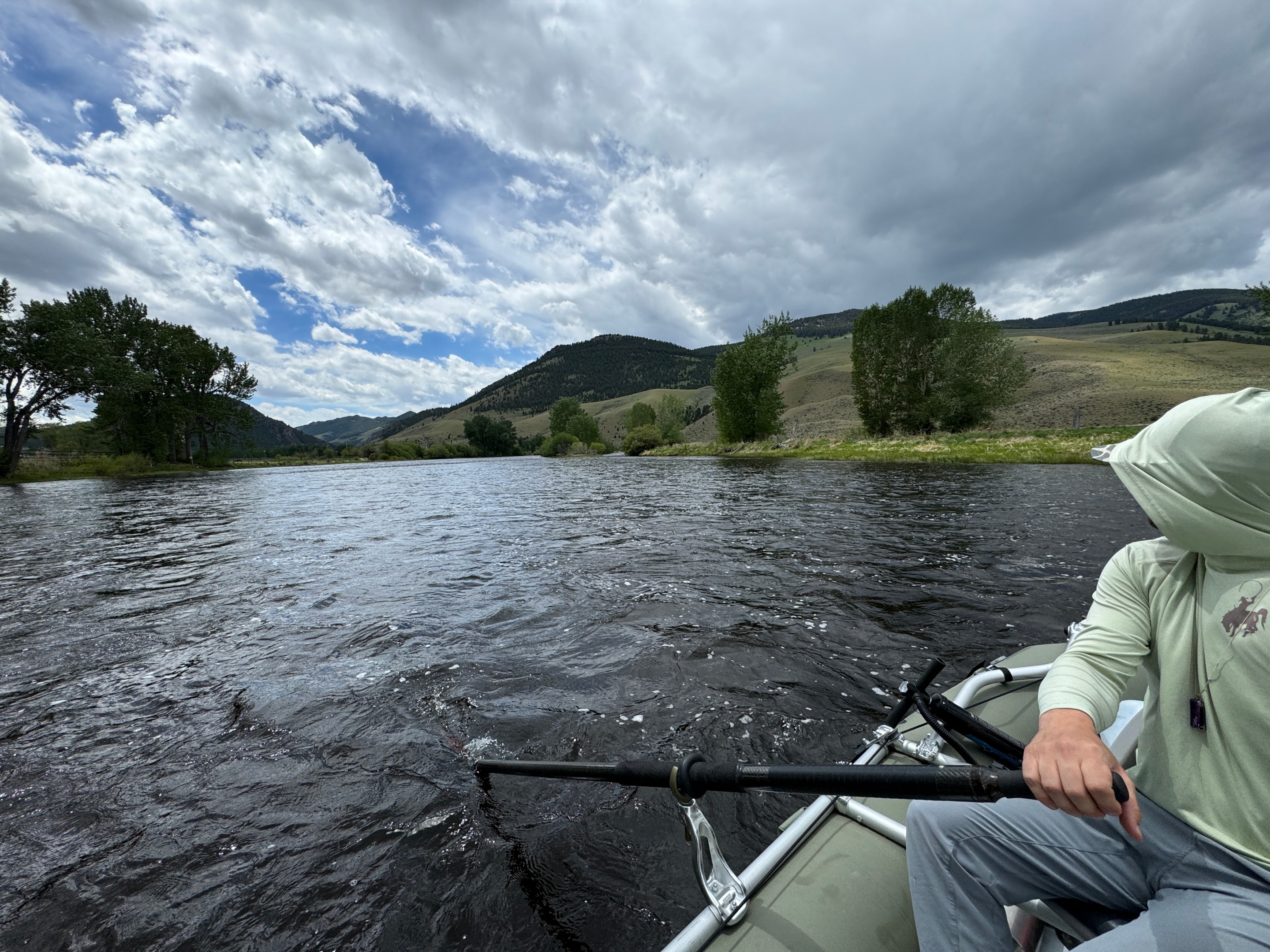
Inflatable fishing rafts offer unmatched versatility when it comes to rowing, making them the best option for accessing a wide range of rivers. Whether you’re floating down big, powerful water like the North Fork of the Snake, maneuvering through technical whitewater canyons, or threading your way down small, shallow streams, a raft can handle it all. Their lightweight design and shallow draft make them ideal for navigating tight spots, narrow channels, and low-flow sections—places where a drift boat would get stuck or become impossible to maneuver. For anglers who want the freedom to fish any river, any time, rafts provide the most reliable access.
Beyond versatility, rafts are simply easier to row. They weigh significantly less than drift boats and have less surface area dragging in the water. Most rafts have a rockered bow and stern, meaning only 10–12 feet of a 14-foot raft is actually in contact with the water, whereas a drift boat’s entire hull sits in the river. This reduced water contact means less resistance and greater efficiency per stroke, allowing for quick adjustments and nimble handling. If you spot a rock at the last second, you can easily pivot the bow and pull back on the oars to avoid it—something that’s much harder in a heavier, rigid drift boat. And if you do hit a rock? A raft just bounces off, while a drift boat risks costly damage to its fiberglass or wood hull—potentially turning a simple float into a major repair hassle.
Drift Boats: Heavier, Less Forgiving, and More Limited
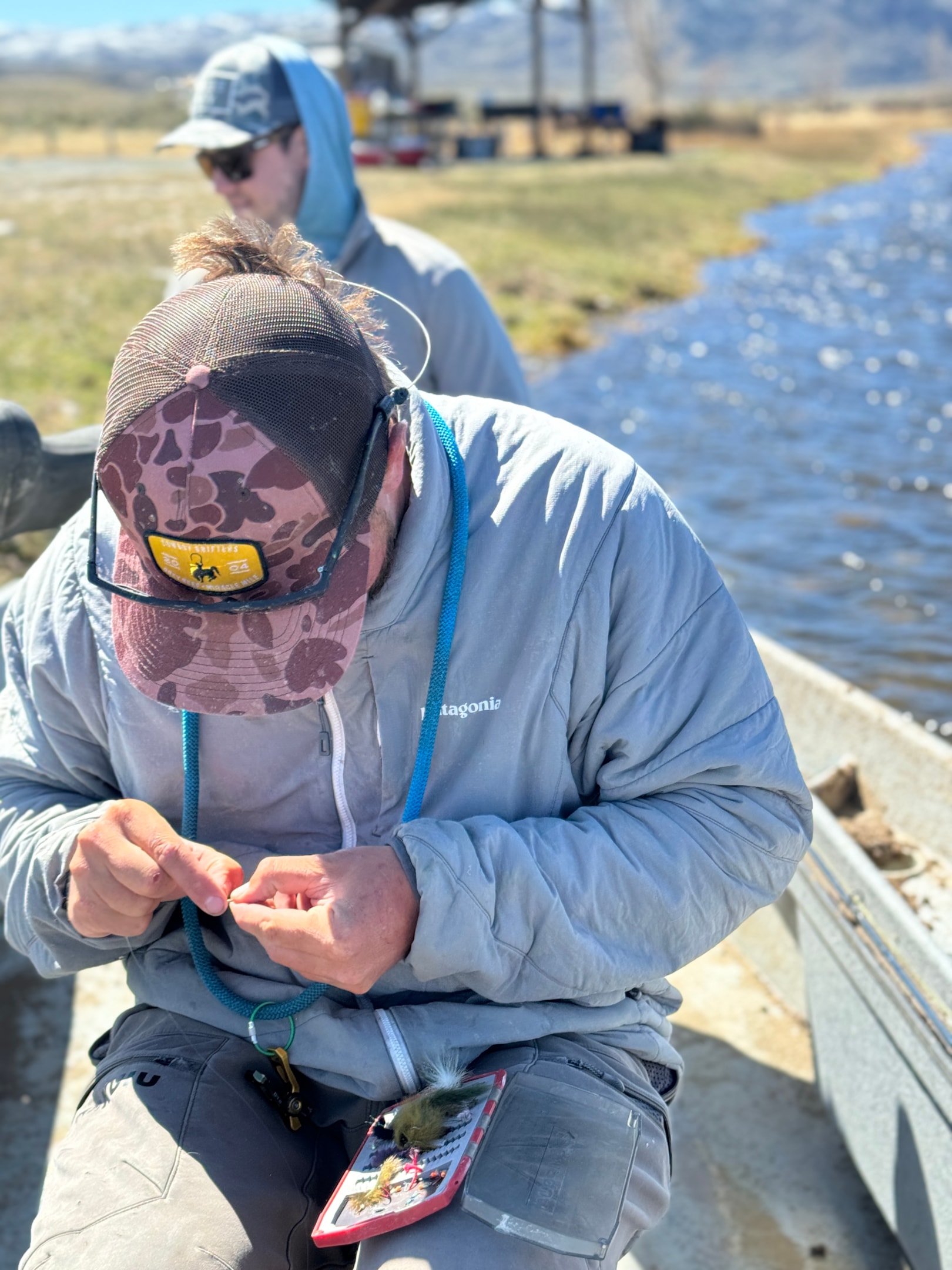
Drift boats are purpose-built for fly fishing, offering ample storage, space spacious decks, and a stable casting platform. However, these benefits come at a cost—their size and weight make rowing more physically demanding and limit where they can go. Because drift boats sit lower and heavier in the water, they struggle in shallow small rivers, technical rapids, and tight channels. For example, Box Canyon on the Henry’s Fork drops to low flows at certain times of the year, forcing drift boat guides to relocate to other stretches while raft users continue floating through without issue.
Rowing a drift boat also comes with a steeper learning curve and less margin for error. Since the hull is rigid and more prone to damage, you have to be extra cautious around rocks, low water, and submerged hazards. A bad line in a raft might mean a quick bump and an easy correction, but in a drift boat, it could mean a cracked hull, an expensive repair, or even a ruined trip. Additionally, the extra weight encourages overpacking, making an already heavy boat even harder to row. This ultimately reduces access to less-pressured waters, since drift boats are limited to stretches where boat ramps and sufficient water depth exist. And if you can’t reach those hidden side channels or shallow backwaters, you’re missing out on fish that see far less angling pressure and are more willing to eat with reckless abandon.
3. Stability
Inflatable Fishing Boats: Improved Stability with Modern Design
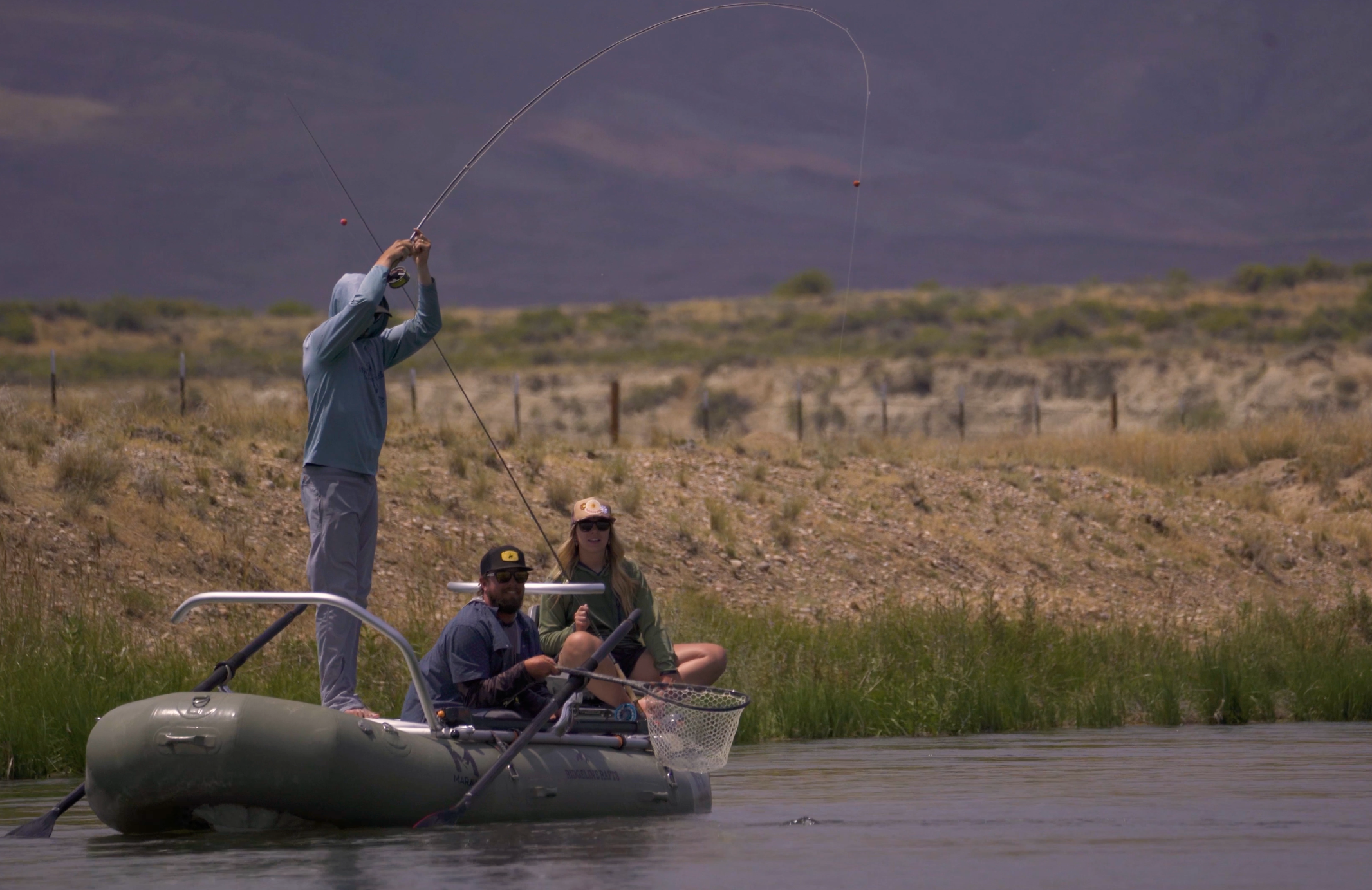
Historically, stability was a weak point for inflatable fishing boats, as many were designed with narrow widths and small tube sizes to maximize maneuverability and portability. Many off-the-shelf rafts still fall into this category, measuring 48 inches wide or less, with 14- to 15-inch tubes, making them nimble but prone to tipping. However, we've improved on the modern fishing rafts, incorporating larger tube diameters and wider frames for increased stability. By increasing tube size to 17 inches and expanding the width to 65 inches, our rafts strike the perfect balance between stability and maneuverability—giving anglers the confidence to stand and cast to rising trout without feeling cramped or off-balance.
One of the biggest advancements in raft stability comes from drop-stitch floors, which create a firm, rigid surface that feels similar to standing on wood. Unlike older inflatable floors that felt spongy and unstable, these modern floors allow anglers to move around, shift their weight, and cast with confidence. The primary stability concern with rafts today isn’t the floor—it’s the overall tube size and width of the raft itself. A well-designed fishing raft provides all the stability you need, without sacrificing the versatility and impact absorption that make rafts superior in rough or technical water.
Drift Boats: Stable, but Less Forgiving
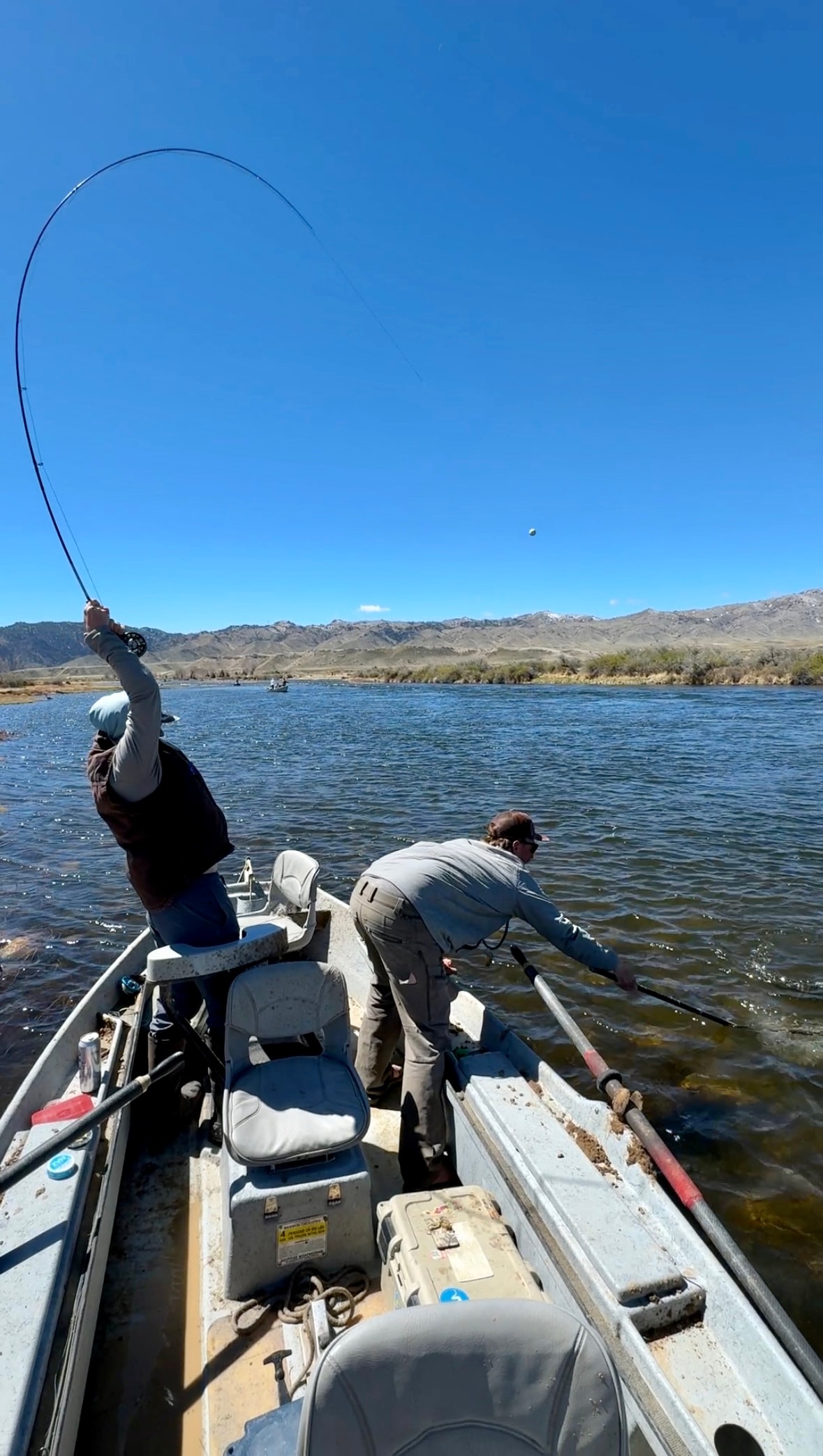
Drift boats are designed for stability in moderate river conditions, thanks to their wide, flat bottoms and flared sides. This makes them a solid choice on calmer more stable flows, where the boat sits securely in the water and provides a stable casting platform. However, unlike rafts—which naturally absorb turbulence and flex with the water—drift boats rely entirely on their rockered hull to navigate current. While this design helps them glide over waves, it doesn’t adapt as well to shifting currents, sudden surges, or technical rapids.
The rigid structure of a drift boat makes stability a double-edged sword. On flat water, it feels stable, but in rough or unpredictable conditions, the boat reacts suddenly to impacts. A rock that a raft would bounce off without issue can send a drift boat off balance or even cause damage. Additionally, drift boats require more attention to river flows—a stretch that’s passable at one flow might be too low for a drift boat a month later, forcing anglers to move to different water. Rafts eliminate that concern entirely, offering a more adaptable, stable, and forgiving platform across a broader range of river conditions.
4. Storage
Inflatable Fishing Boat: Compact for Parking, Customizable for Gear
One of the biggest advantages of a fishing raft is its ease of storage both on and off the water. When it comes to parking and storing the boat, rafts are far more convenient than drift boats. A raft can be deflated and packed away, allowing anglers to store it in a garage, shed, or even a closet—something you simply can’t do with a drift boat. Even when fully assembled, rafts take up significantly less space and can be stored on a trailer, leaned against a wall, or even hung from a ceiling with proper rigging. This makes them ideal for anglers with limited space, HOA restrictions, or no room for a dedicated parking spot.
On the water, storage in a raft is more flexible but requires better organization. Unlike drift boats, rafts don’t have built-in compartments, which means gear is typically stored in dry bags, strapped to the frame, or placed in designated gear racks. While this may seem like a downside, it allows for full customization—you can configure your storage setup however you like, based on the type of trip you’re taking. Additionally, rafts force you to bring only what you truly need, reducing unnecessary clutter. This is particularly helpful when navigating rough water or when portaging is required, as a lighter, more streamlined setup is always better.
Drift Boats: Convenient On-Water Storage, But Harder to Park
Drift boats excel in on-the-water storage, offering built-in compartments, rod holders, and spacious deck layouts. This makes them great for organization—every piece of gear has a designated place, reducing clutter and making it easy to access what you need. This is a major benefit for anglers who prefer a tidy, structured setup without the need for extra rigging or modifications. However, this storage setup is also fixed, meaning less flexibility compared to a raft. If you want to bring larger gear or adjust your layout for different trips, you’re stuck working with the existing compartments.
Where drift boats become a challenge is in parking and storing the boat. Unlike a raft, which can be packed away or creatively stored, a drift boat requires a dedicated parking spot year-round. You’ll need either a garage, a driveway, or a storage unit, all of which add cost and logistical challenges. And because drift boats require a trailer for transport, you’ll need space for both the boat and the trailer—a significant commitment if you only fish part of the year. Many anglers who buy drift boats don’t fully consider the long-term storage needs, which can become a hassle when the boat isn’t in use.
5. Cost
Inflatable Fishing Boat: More Affordable and Lower Maintenance
When it comes to cost, inflatable fishing boats offer far more value for your money. They are significantly cheaper to buy new compared to drift boats, and even used models remain budget-friendly. Beyond the upfront savings, rafts also have lower long-term costs—they don’t require registration in most states, trailer fees, or expensive repairs.
Maintenance is also straightforward and inexpensive. Routine care includes rinsing off dirt and debris, checking for punctures, and properly storing the boat—tasks that are simple and low-cost. Thanks to modern materials like reinforced & sprayed PVC or Hypalon, high-quality rafts are incredibly durable and built to last for years, even in rough conditions. Unlike drift boats, which require structural repairs or refinishing over time, rafts are more forgiving and easier to maintain.
Drift Boats: Higher Upfront and Long-Term Costs
Drift boats come with a steep price tag, and for good reason. Brands like Hyde Drift Boats, Ro Drift Boats, or Adipose Drift Boats (and other drift boat manufacturers) craft well-built, high-performance boats, but that craftsmanship doesn’t come cheap. Beyond the upfront cost, ownership comes with ongoing expenses—most states require boat registration, trailer registration, and periodic maintenance. Repainting, repairing dents, and ensuring your trailer stays in top shape all add to the total cost of ownership.
Storage is another major consideration. Drift boats require dedicated space, whether it’s a garage, driveway, or rented storage unit. If you don’t have room at home, you’ll need to factor in storage fees, which can add up quickly—especially for anglers who only fish seasonally and store their boat for months at a time.
-
Entry-Level Drift Boats: These typically range from $8,000 to $12,000.
-
Mid-Range Drift Boats: These boats usually cost between $12,000 and $20,000.
-
High-End Drift Boats: Premium models can range from $20,000 to $30,000 or more.
Even the used market isn’t exactly cheap—a 20+ year-old drift boat can still fetch close to $10,000 at a glance through classifieds. While they can last a long time with proper care, repairs and upkeep aren’t always cheap or easy, making them a long-term investment both in money and effort.
Conclusion: The Ideal Choice for Fly Fishing
In conclusion, choosing between an inflatable fishing raft and a drift boat ultimately comes down to personal preferences, fishing needs, and logistical considerations. Inflatable rafts offer unmatched versatility, ease of transport, and adaptability, making them ideal for anglers who prioritize accessibility to a variety of waters, especially more remote or technical rivers. Their lightweight design, flexibility in storage options, and lower cost make them a solid choice for those who want a boat that can be easily moved and stored without requiring a dedicated parking space or trailer.
On the other hand, drift boats are purpose-built for a more specific type of fishing experience, with spacious layouts, excellent stability on calmer waters, and a solid casting platform. While they are heavier and require more maintenance, a drift boat can offer a more comfortable, organized experience for those fishing on established river systems with proper boat ramps. The trade-offs, including their higher cost and limited transport flexibility, should be carefully considered if you're drawn to the idea of owning a drift boat.
If you're seeking the most cost-effective and low-maintenance option, an inflatable fishing raft is likely the way to go. It allows for easy transport and storage, making it perfect for anglers with limited space or those who need to access hard-to-reach waters. Rafts are also significantly more affordable upfront and require less maintenance in the long term, making them a practical choice for most fly fishermen.
Ultimately, both types of boats have their place in the world of fly fishing, but inflatable rafts stand out as the more versatile, affordable, and easy-to-manage option for anglers who want to maximize their fishing opportunities across various river conditions. Whether you're just starting out or looking to expand your fishing horizons, a raft is a worthy investment that will serve you well for years to come.
Also, pups don't give a rip on which you choose, they just want to come along and sniff some fish.
